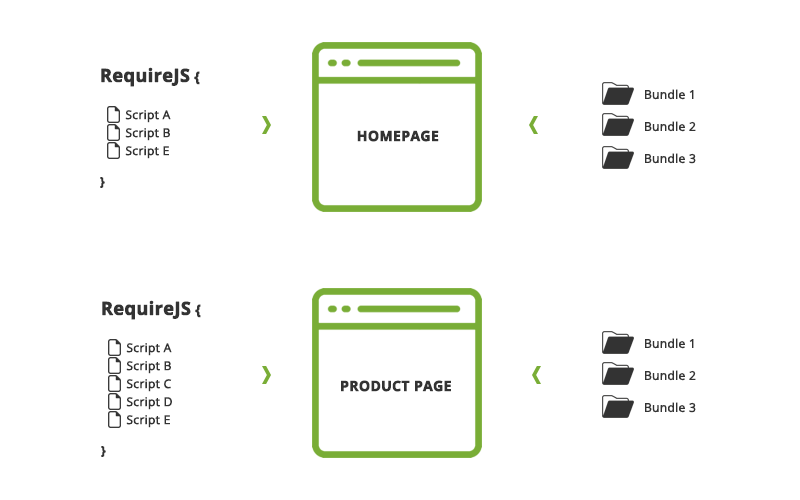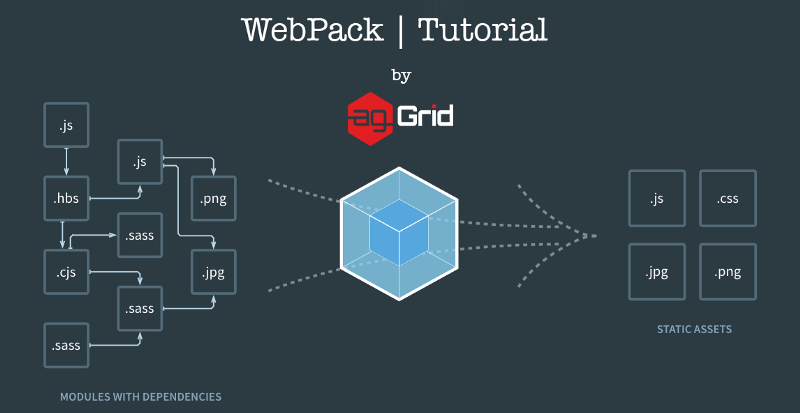In the rapidly evolving world of web development, build tools are the unsung heroes, working behind the scenes to transform our modern JavaScript, TypeScript, and CSS into optimized assets that browsers can understand. For years, bundlers like Webpack and Rollup dominated the landscape, but their approach of bundling entire applications before serving them led to notoriously slow development feedback loops. Then came Snowpack, a pioneer that challenged this paradigm with a revolutionary idea: leverage native ES Modules (ESM) to serve unbundled code during development. This promised near-instantaneous server start times and lightning-fast updates, a breath of fresh air for developers.
This article provides a comprehensive technical deep dive into Snowpack. We’ll explore its core concepts, how it fundamentally changed the developer experience, and its advanced features. We will also analyze its legacy and the reasons for its “retreat” as newer tools like Vite, inspired by Snowpack’s innovations, came to dominate the ecosystem. This retrospective serves as both a historical record and a valuable lesson in the iterative nature of software tooling, with relevant insights for anyone following Vite News, Webpack News, or the broader JavaScript News landscape.
The Core Innovation: Unbundled Development with ES Modules
To understand Snowpack’s impact, one must first grasp the problem it solved. Traditional bundlers like Webpack operate on a simple but time-consuming principle: take all your application’s JavaScript files, along with their dependencies from node_modules, and bundle them into one or more large JavaScript files. Every time you saved a file, the entire bundle had to be regenerated, a process that could take seconds or even minutes in large applications.
From Bundled to Unbundled
Snowpack flipped this model on its head for development. Instead of bundling, it leveraged the fact that all modern browsers support ES Modules (ESM) natively via the <script type="module"> tag. The workflow became:
- Initial Scan: On the first run, Snowpack scans your
node_modulesand pre-builds each dependency into a single JavaScript file. For example,reactandreact-domwould each be converted into a single ESM-compatible file and placed in aweb_modules/directory. This step only happens once or when dependencies change. - Serve As-Is: During development, Snowpack starts a server that serves your application’s source files directly to the browser. An import like
import React from 'react';is transformed on-the-fly toimport React from '/web_modules/react.js';. - Browser Handles It: The browser then requests each file as needed, creating the module graph itself. When you change a single file, only that file needs to be re-served and updated, leading to millisecond-fast Hot Module Replacement (HMR).
This approach eliminated the bundling step during development, resulting in a significantly faster and more efficient developer experience. The core configuration was often remarkably simple.
A Basic Snowpack Configuration
A typical snowpack.config.mjs file defines mount points, plugins, and other settings. Here’s a simple example that tells Snowpack where to find source files and where to build them.
// snowpack.config.mjs
/** @type {import("snowpack").SnowpackUserConfig} */
export default {
mount: {
public: { url: '/', static: true },
src: { url: '/dist' },
},
plugins: [
// Plugins for React, Svelte, etc., would go here
],
routes: [
/* Enable an SPA Fallback by serving 'index.html' for all unmatched routes */
{ match: 'routes', src: '.*', dest: '/index.html' },
],
optimize: {
/* Example: Bundle and minify for production */
bundle: true,
minify: true,
target: 'es2020',
},
packageOptions: {
/* Advanced settings for dependency management */
},
devOptions: {
/* Dev server options */
port: 8080,
},
buildOptions: {
/* Build-specific options */
clean: true,
},
};This configuration demonstrates the declarative nature of Snowpack, making it far more approachable than the complex Webpack configurations that were common at the time. This simplicity was a major selling point and a key piece of Snowpack News when it first launched.

Implementation: Integrating Snowpack into a React Project
Setting up Snowpack was designed to be straightforward, whether starting a new project or migrating an existing one. The official create-snowpack-app (CSA) tool provided templates for popular frameworks, including React, Vue.js, and Svelte, making initial setup a breeze.
Project Setup and Development Workflow
Let’s walk through a manual setup for a simple React application to understand the mechanics. First, you’d install the necessary dependencies:
# Install Snowpack and React
npm install --save-dev snowpack
npm install react react-domNext, you’d create your source files. The index.html would be the entry point, using a module script.
<!-- public/index.html -->
<!DOCTYPE html>
<html lang="en">
<head>
<meta charset="UTF-8">
<meta name="viewport" content="width=device-width, initial-scale=1.0">
<title>Snowpack React App</title>
</head>
<body>
<div id="root"></div>
<!-- Note the type="module" attribute -->
<script type="module" src="/dist/index.js"></script>
</body>
</html>The JavaScript entry point would render the React application. Notice how it imports React and a component just like in any other React project. Snowpack handles resolving these imports in the browser.
// src/index.js
import React from 'react';
import ReactDOM from 'react-dom';
import App from './App.jsx';
ReactDOM.render(
<React.StrictMode>
<App />
</React.StrictMode>,
document.getElementById('root')
);
// Accept HMR updates
if (import.meta.hot) {
import.meta.hot.accept();
}To run the development server, you would execute npx snowpack dev. The server would start almost instantly. When the browser requests /dist/index.js, Snowpack serves the file. When the browser sees import React from 'react', it requests that module. Snowpack intercepts this, serving its pre-processed version from /web_modules/react.js. This elegant dance between the dev server and the browser’s native ESM capabilities was the magic of Snowpack.
Advanced Techniques and The Production Build Paradox
While the unbundled development story was compelling, real-world applications require more than just serving files. They need support for TypeScript, CSS pre-processors like Sass, and optimized production builds. Snowpack addressed these needs through a powerful plugin system and a flexible build process.
The Plugin Ecosystem
Snowpack’s plugin API allowed developers to extend its capabilities. For example, to add support for React’s Fast Refresh (an advanced form of HMR) and Sass, you would install the relevant plugins and add them to your configuration.

// snowpack.config.mjs
// (Continuing from the previous example)
export default {
mount: {
public: { url: '/', static: true },
src: { url: '/dist' },
},
plugins: [
'@snowpack/plugin-react-refresh', // Enables Fast Refresh for React
'@snowpack/plugin-dotenv', // Loads environment variables from .env files
[
'@snowpack/plugin-sass', // Enables Sass/SCSS support
{
/* plugin options */
},
],
],
// ... other options
};This plugin system made Snowpack highly extensible, enabling it to compete with the feature sets of more mature tools. There were official plugins for nearly every major framework and tool, from Vue.js News and Svelte News to transpilers like Babel and SWC. This flexibility was crucial for adoption in a diverse ecosystem that included frameworks like Angular News, Next.js News, and even emerging ones like SolidJS News.
The Production Build
Herein lies a critical point in the Snowpack story. While unbundled development was fast, shipping hundreds of small, un-optimized files to production is inefficient due to network latency. For production, bundling is still the best practice. Snowpack acknowledged this and integrated with established bundlers like Webpack or faster alternatives like esbuild for its production build step (snowpack build).
This created a slight paradox: the tool that championed an “unbundled” philosophy still relied on a bundler for its most important output. This dual-pipeline approach—one for development, another for production—could sometimes lead to subtle inconsistencies between the two environments. This was a key area where its successor, Vite, would innovate. Vite uses esbuild for pre-bundling dependencies in development and Rollup for production builds, creating a more cohesive and finely-tuned experience from the start.
Best Practices, Pitfalls, and the Inevitable Retreat
Snowpack was a monumental step forward, but its architecture presented certain challenges that ultimately paved the way for its successors. Understanding these points provides valuable context for anyone following modern frontend tooling, from Node.js News to TypeScript News.
Common Pitfalls and Considerations

- Dependency Hell in
web_modules: Snowpack’s strategy of processing each npm dependency into a single file could be brittle. Packages with complex internal dependencies or non-standard entry points sometimes failed to resolve correctly, requiring manual configuration inpackageOptions. - Large Project Performance: In very large applications with thousands of modules, the browser’s ability to handle the sheer number of network requests for individual files could become a bottleneck, even in development. This “waterfall” of requests could slow down initial page loads.
- Dev/Prod Parity: As mentioned, using a different pipeline for development and production could lead to bugs that only appeared after a build. An issue might not be present in the unbundled dev environment but would surface once Webpack or esbuild processed the code for production.
Why Vite Won the Next-Generation Race
Vite, created by Vue.js creator Evan You, took Snowpack’s core idea and refined it, addressing its key weaknesses. This is a central theme in recent Vite News and Frontend News.
- Pre-Bundling with esbuild: Instead of processing each dependency into a separate file like Snowpack, Vite uses the incredibly fast Go-based bundler esbuild to pre-bundle all npm dependencies into a few optimized chunks. This drastically reduces the number of browser requests on initial load, solving the network waterfall problem.
- Integrated Production Build: Vite uses Rollup—a highly optimized and mature bundler—for its production builds. This integration is seamless and configured out-of-the-box, providing a more robust and consistent experience compared to Snowpack’s pluggable bundler approach.
- First-Class Framework Support: While Snowpack had plugins, Vite was built with deep, first-class support for frameworks like Vue, React, and Svelte, offering a more polished and integrated HMR experience.
The rise of Vite, and more recently Turbopack, signals the industry’s continued push for faster, more efficient tooling. Snowpack’s “retreat” wasn’t a failure but a successful proof-of-concept that demonstrated the viability of ESM-native development, inspiring the very tools that would eventually supersede it.
Conclusion: Snowpack’s Enduring Legacy
Snowpack may no longer be the center of attention in the fast-paced world of frontend development, but its influence is undeniable. It was a visionary tool that correctly identified the primary bottleneck in the developer experience—the slow, monolithic bundler—and proposed a radical, elegant solution using native browser features. By championing ESM-native development, Snowpack fundamentally shifted the conversation and forced the ecosystem to rethink what a modern build tool could be.
The core principles pioneered by Snowpack—instant server start, lightning-fast HMR, and leveraging native platform features—are now standard expectations for modern tools like Vite. Developers working with React News, Svelte News, or any modern framework today owe a debt of gratitude to Snowpack’s innovations. Its story is a powerful reminder that in technology, progress is often iterative. One tool’s retreat often marks the advance of a new generation built upon its groundbreaking ideas.

